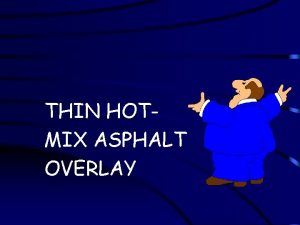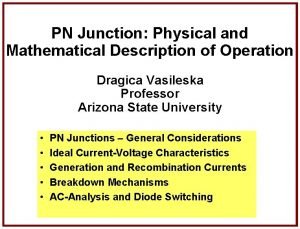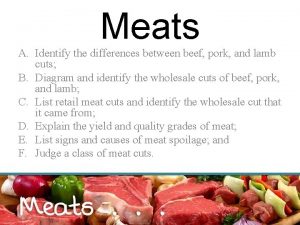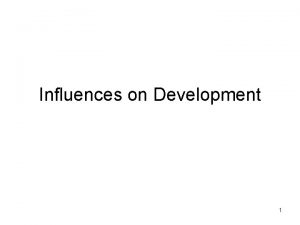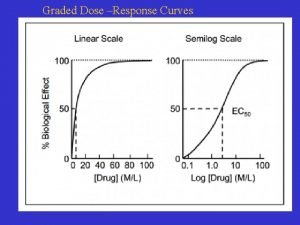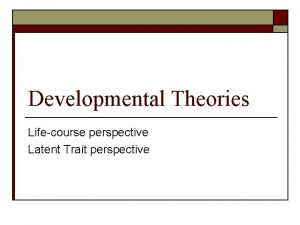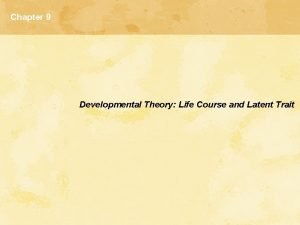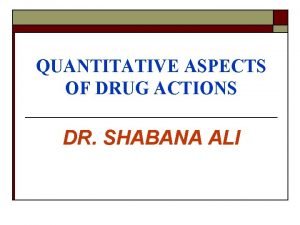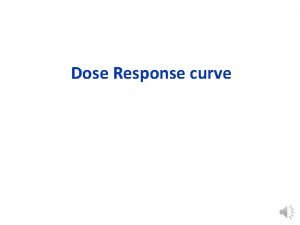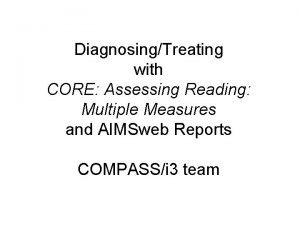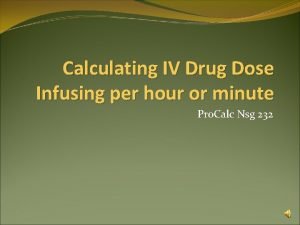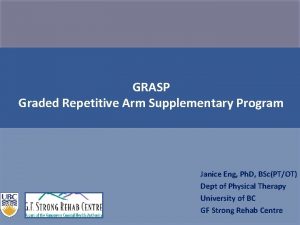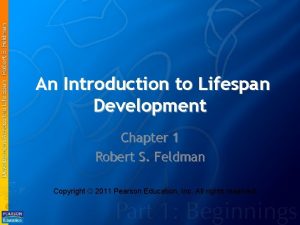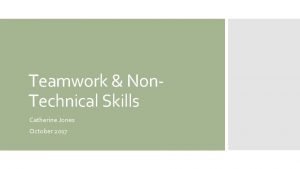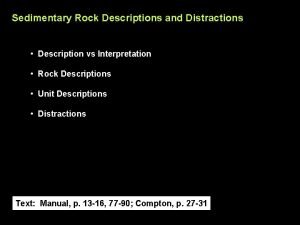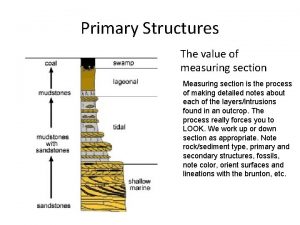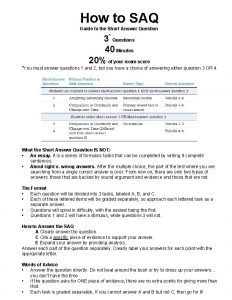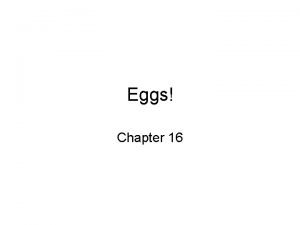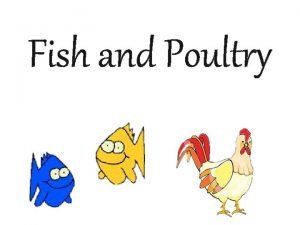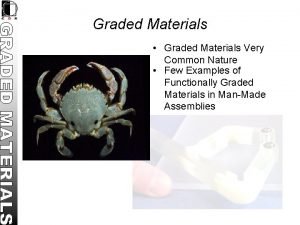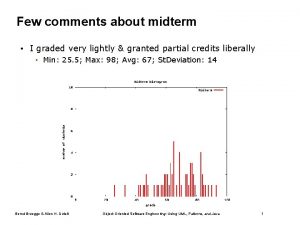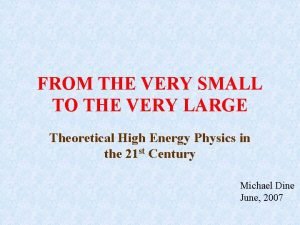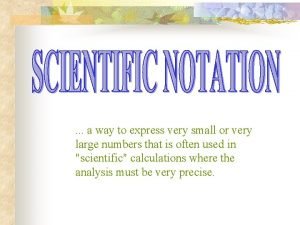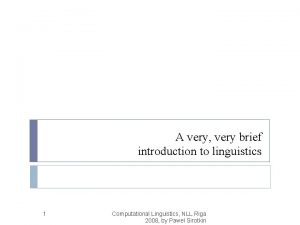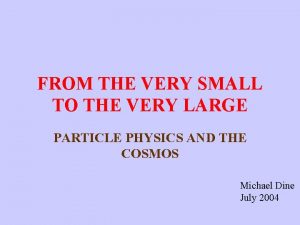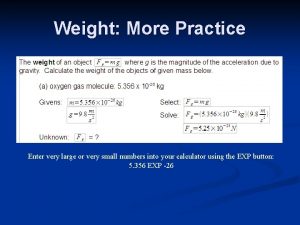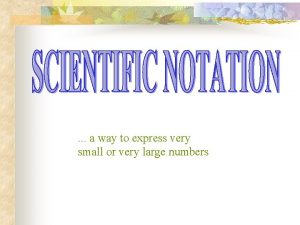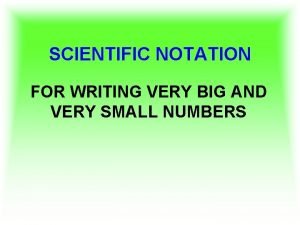Project 1 is graded I graded it very



















































- Slides: 51

Project 1 is graded • I graded it very liberally, but I will not do so for project II • Some folk cheated. Before you cheat, remember three things. – I am not an idiot – I have access to Google too – I hate cheaters • I did not write extensive notes on your project, but if you want to know why I dinged you, you can bring your project by my office



For 2% extra credit • Van Halen is known for having one of the most complex, and aesthetically beautiful drum kits in the music business. • Who make the Van Halen’s drums?



Inference Rules Some patterns of reasoning are so common that instead of creating a truth table each time we see them, we can just establish their truth once, then reuse the pattern in any situation.

Last time we saw some inference rules… Rules of inference are syntactical transform rules which one can use to take a fact(s) and generate new fact(s). The set shown below is not the full set. For example I did not include some obvious ones: • Commutative: A B B A • Associative: (A B) C A (B C) And I did not include some rare, unintuitive rules • *Modus tollens: A B, B |- A The set we have is complete, we could use them to derive all others. * A B, B |- A If I am a dog, I have a tail I do not have a tail Therefore, it is not true I am a dog

Knowledge Base TELL A John is over 18 , as it happens we know John is 50

Knowledge Base A B TELL B B means Susan is over 18 , as it happens we know Susan is 7

Knowledge Base A B C D TELL C D John is married OR John is happy

Knowledge Base A B C D A F B C F

Knowledge Base A B C D A F B C F Suppose someone ASKs A In other words, is it the case that … Knowledge Base |- A Since A appears in out KB, then yes.

Knowledge Base A B C D A F B C F Suppose someone ASKs F In other words, is it the case that … Knowledge Base |- F This time F does not appear, by itself, in the KB. There are two ways we might be able to do this, first truth tables. .

Knowledge Base A B C D A F B C F A B Suppose someone ASKs F In other words, is it the case that … Knowledge Base |- F There second way is expanding our Knowledge Base until it includes the literal F. Lets try AND-Introduction …did not help

Knowledge Base A B C D A F B C F A B A F Suppose someone ASKs F In other words, is it the case that … Knowledge Base |- F That did not help, lets try AND Elimination That worked

Knowledge Base A B C D A F B C F A B A F Suppose someone ASKs T Since T does not appear in the KB, it is definitely not entailed by it. However, there may be questions that we can ASK, that do refer to propositional symbols in our KB, but the KB does not entail them.

Suppose you know that you are going to fail or pass CS 170. Further, since this is the only class you need to graduate, you know that you are going to either not pass the class or graduate on time. Then you can derive the fact that you will either not pass or you graduate on time. Fail or Pass, not Pass or Graduate. On. Time Therefore Fail or Graduate. On. Time F P G Fail Pass Graduate on time F P, P G F G

Limitations of Propositional Logic • Hard to identify individuals (terms). E. g. , Mary, John, 17, Canada. (Propositional Logic is good for facts, not individuals) • Can't directly talk about properties of individuals or relations between individuals. E. g. , how to represent the fact that John is tall? We could try a variable John. Is. Tall, but suppose we then want to encode a rule that tall people are good at basketball, Tall. People Good. At. Basketball Given a knowledge base that consists of John. Is. Tall. People Good. At. Basketball We have no way to conclude that John is good at basketball! • Generalizations, patterns, regularities can't easily be represented. E. g. , all triangles have 3 sides

Lets expand our view of the world. Before the world consisted of facts (Propositional Logic), now we consider the world of First Order Logic (FOL), which consists of Terms (objects) • People, Numbers, Cars, Bicycles, Books, Events, Places. . . Functions (Statements that return Terms) • Mother. Of, Divisor. OF, Country. Of. Origin. Of Predicates (Statements that return True or False) • is. Male, is. Prime, is. American, is. Hardback, is. Religious, is. Nato. Member. . . Connectives • , , Quantifiers •

We normally write functions as something. Of We normally write predicates as is. Something However, these are not enforced, and not consistent from book to book. Sometimes these standards produce weird or ambiguous function or predicate names, so they are avoided. For example: • is. Cat(P) seem natural for a predicate for felineness. • But is. Tail. Owner(P) seems less natural than has. Tail(P) • And is. Less. Than does not scan as well as just less. Than(X) Functions (Statements that return Terms) • Mother. Of, Divisor. OF, Country. Of. Origin. Of Predicates (Statements that return True or False) • is. Male, is. Prime, is. American, is. Hardback, is. Religious, is. Nato. Member. . .

Terms (A term is an expression that refers to an object). Either • A symbol • A function application Symbols can be constants: John, Mary, 17, 56 or variables: F_name, L_name, X, Y Function applications are usually written as Something. Of Mother. Of(John) Age. Of(Mary) Eye. Color. Of(Mother. Of(John))

There is an important difference between Predicates and Functions Predicates • is. Male, is. Prime, is. Religious, is. Capital. City (mapping from terms to truth values) is. Male(Joe), is. Male(Sue), is. Prime(10), is. Prime(7) T F F T Functions • Mother. Of, Divisor. OF, Country. Of. Origin. Of (mapping from things to things) Mother. Of(John), Mary Country. Of. Origin. Of(Eamonn) Ireland

How to interpret Predicates is. Brother(Harpo, Groucho) It is the case that Harpo is the brother of Groucho is. Mother(Minnie, Groucho) It is the case that Minnie is the mother of Zeppo is. Country. Of. Origin(Jordan, Ireland) It is the case that Jordan is the Country of Origin of Ireland Otherwise are we claiming Mike Ireland is from Jordan or Michael Jordan is from Ireland?

Note that the predicate. . . does not automatically imply is. Brother(Harpo, Groucho) is. Brother(Groucho, Harpo) Just as. . . clearly does not imply is. Mother(Minnie, Groucho) is. Mother(Groucho, Minnie) If we want to encode the fact that the bother relation is symmetric, we must do so explicitly. . . is. Brother(x, y) is. Brother(y, x) This would only be true in a universe that has only males! (because y could be a female). This might be a universe of interest. For example our KB might be about Popes.

Atomic Sentences (An atomic sentence is a predicate with its “arguments”, it has a True/False value). is. Prime(12) is. Prime(x) is. Brother(Harpo, Groucho) is. Brother(Harpo, person 1) Atomic sentences can have complex terms. is. Prime( Square. Root. Of(25) ) is. Brother(Harpo, Youngest. Son. Of( Minnie. Marx ) ) Minnie. Marx is a constant term. If we apply the function Youngest. Son. Of to Minnie. Marx we get Chico, who was a bother of Harpo, so the predicate brother(Harpo, Youngest. Son. Of( Minnie. Marx ) ) is TRUE.

Complex Sentences (Atomic sentence with logical connectives). is. Prime(x) is. Divisible. By. Two(x) is. Brother(Harpo, Groucho) is. Brother(Groucho, Harpo) is. Brother(Harpo, Eamonn)

Since we now have a way to represent objects, we need a way to represent properties for classes of objects. Suppose I want to represent the fact that all Irishmen are European. We what we have learned to this point I could represent that fact like this… is. Irish(Eamonn) is. Irish(Liam. Neeson) is. Irish(Bono) is. Irish(Pierce. Brosnan) is. European(Eamonn) is. European(Liam. Neeson is. European(Bono) is. European(Pierce. Brosnan) …. However FOL allows a shortcut, the Universal qualifier x is. Irish(x) is. European(x) Read as: For all x, is. Irish(x) implies is. European(x)

FOL allow us to make statements about the existence of objects. Suppose I want to represent the fact that there non-Irish Europeans. I could do this by stating is. European(bob) is. Irish(bob) is. European(joe) is. Irish(joe) is. European(tom) is. Irish(tom) …. However FOL allows a shortcut, the Existential qualifier x is. European(x) is. Irish(x) Read as: There Exists x, such that is. European(x) is. Irish(x)

Some examples of qualification I There is an number that is both prime and even x is. Prime(x) is. Even(x) Every integer is odd or even (note: should really be xor) x is. Integer(x) is. Even(x) is. Odd(x) There is a man who is brother to both Harpo and Groucho x is. Brother(x , Harpo) is. Brother(x , Groucho) Everybody loves Eamonn x Loves(x, Eamonn) Clumsy and ambiguous if written as is. Loverof(x, y) Everybody who loves Eamonn is mentally ill x Loves(x, Eamonn) is. Mentally. Ill(x)

Some examples of qualification II There is no number that is both odd and even x is. Odd(x) is. Even(x) Not all cats have tails x is. Cat(x) has. Tail(x) Eamonn does not have a younger brother x is. Brother(x , Eamonn) is. Younger(x, Eamonn) Eamonn does not have a younger brother x is. Brother(x , Eamonn) lessthan(age(x), age(Eamonn)) All Jackie Chan movies make more that 10 million x Jackie. Chanmovie(x) greaterthan(box. Office(x), 10, 000 )

Qualifiers can be nested I If A is taller than B, then B is shorter than A or x y x, y is. Taller(x, y) is. Shorter(y, x) There exists a pair of numbers that differ by one, and are both prime or x y is. Prime(x) is. Prime(y) is. Equal(x, y-1) x, y is. Prime(x) is. Prime(y) is. Equal(x, y-1)

Qualifiers can be nested II Everybody loves somebody x y loves(x, y) There is somebody that everybody loves y x loves(x, y) So order matters!!!!

Assume there are five people in our universe, a, b, c, d, and e We can say… Everyone is loved by someone x y loves(y, x) be loved (x) a is loved by c b is loved by a c is loved by d d is loved by d e is loved by a who can love (y)

Assume there are five people in our universe, a, b, c, d, and e We can say… Everyone loves someone. x y loves(x, y) be loved (x) who can love (y)

Assume there are five people in our universe, a, b, c, d, and e We can say… Someone loves everyone. x y loves(x, y)

Assume there are five people in our universe, a, b, c, d, and e We can say… Someone is loved by everyone. x y loves(y, x)

Assume there are five people in our universe, a, b, c, d, and e We can say… Someone loves himself. x loves(x, x)

Assume there are five people in our universe, a, b, c, d, and e We can say… Everyone loves himself. x loves(x, x)

Assume there are five people in our universe, a, b, c, d, and e We can say… Someone loves someone. x y loves(x, y)

Assume there are five people in our universe, a, b, c, d, and e We can say… Everyone loves Everyone. x y loves(x, y)

Some examples of nested qualification It is always the case that if you are taller than someone, and that person is taller that someone else you must also be taller than that someone else x, y, z is. Tallerthan(x, y) is. Tallerthan(y, z) is. Tallerthan(x, z) If I want to say that there an infinite number of numbers, I can say that for every number, there exists another number that is greater by one. x y is. Equals(x, y - 1) If I want to say that there is an animal at the top of the food chain, I can say that there exists an animal that eats all other animals. x y eats(x, y) Clumsy if written as is. Eaterof(x, y) Above I am assuming that only animals exist in my domain. But if my domain includes books, animals and cars, the above states that something exists that eats all of these! So I should really say x y is. Animal(x) is. Animal(y) eats(x, y)

Note that the English sentence. . . Everybody who loves Eamonn is mentally ill x Loves(x, Eamonn) is. Mentally. Ill(x) Could be rephrased as “There is no one who loves Eamonn that is not also mentally ill”. So we could represent the above as x Loves(x, Eamonn) is. Mentally. Ill(x) In fact having both and is redundant, we could get away with just one of them. However having both makes FOL more readable.

Relationships Between the Qualifiers These are just generalizations of De Morgan Laws x P x P x P x P

At this point we have seen that FOL allows us to represent facts and relationships. Typically we don’t try to represent all possible facts and relationship in the universe, since that would be a trifle ambitious. So we concentrate on some particular area of interest, which we call a Domain. Examples of domains include The Chess Domain The Number Theory Domain The Cancer Domain The Animal Taxonomy Domain The Kinship Domain In this class we will use the Kinship Domain as a running example. . .

Predicates for the Kinship Domain Male, Female Note that I am not using is. Male etc Parent, Sibling, Brother, Sister, Child, Daughter, Son, Spouse, Wife, Husband, Grandparent, Grandchild, Cousin, Aunt, Uncle. Spouse(Bill, Hilary), Husband(Hilary, Bill) Functions for the Kinship Domain Mother. Of, Father. Of(Chelsea), Mother. Of(Chelsea) Note that we have to make choices in defining a domain, for example I am not interested in differentiating between “Grandmother” and “Grandfather”.

Having come up with the Predicates and Functions for our domain, we can now start encoding what facts we know about it. . . Ones mother is ones female parent m, c Mother(c) = m Female(m) Parent(m, c) Everybody is either male or female, but not both x Male(x) Female(x) Everybody has a father x y Father(x) = y Ones husband is ones male Spouse x, y Husband(x, y) Male(x) Spouse(x, y)


Western

Northern Paiute

Knowledge Base x Male(x) Female(x) x brother(x , Eamonn) younger(x, Eamonn) Male(eamonn) Female(sue) (many more omitted) ASK Male(eamonn) ASK Male(sue) ASK x Wife(x , eamonn) ASK y Sister(y , sue) ASK x y Married(x, y) is eamonn male? is sue male? is eamonn married? does sue have a sister? is anyone in our universe married?
 Figure 10
Figure 10 Scientific notation rules
Scientific notation rules Fewfewfewf
Fewfewfewf It is a very shallow skillet with very short sloping sides
It is a very shallow skillet with very short sloping sides What is food quantifiers
What is food quantifiers Optical fibre
Optical fibre Open graded friction course
Open graded friction course Graded assertiveness
Graded assertiveness Graded unit evaluation stage examples
Graded unit evaluation stage examples What are sedimentary rocks
What are sedimentary rocks Graded potential vs action potential
Graded potential vs action potential Step graded junction
Step graded junction Graded potential
Graded potential Graded potentials
Graded potentials Action potential definition
Action potential definition How is pork graded
How is pork graded Poorly graded aggregate
Poorly graded aggregate Examples of normative age-graded influences
Examples of normative age-graded influences Dose response curve potency
Dose response curve potency Graded care profile 2
Graded care profile 2 Graded straight furrow
Graded straight furrow Korean graded readers
Korean graded readers Age graded theory
Age graded theory Normative age graded influences
Normative age graded influences Mobilization grades
Mobilization grades Sieve analysis
Sieve analysis Age graded theory
Age graded theory Social development theory
Social development theory Optical fiber waveguide
Optical fiber waveguide Refractory period in action potential
Refractory period in action potential Graded dose response curve
Graded dose response curve Hnc social services graded unit
Hnc social services graded unit Flame structure geology
Flame structure geology Pharmacological antagonist
Pharmacological antagonist Dose response curve
Dose response curve Core multiple measures
Core multiple measures Graded dose response curve
Graded dose response curve Graded repetitive arm supplementary program
Graded repetitive arm supplementary program Role of teacher in direct method
Role of teacher in direct method Sociocultural graded influences
Sociocultural graded influences Pace graded assertiveness
Pace graded assertiveness Graded bedding
Graded bedding Graded bedding
Graded bedding Graded approach meaning
Graded approach meaning Point bar
Point bar How do cross beds form
How do cross beds form Saq 2
Saq 2 Label the egg structure
Label the egg structure Standar redaman fiber optik telkom
Standar redaman fiber optik telkom Hantam community education trust
Hantam community education trust How are fish and shellfish graded?
How are fish and shellfish graded? Graded care profile derbyshire
Graded care profile derbyshire






